Sea kayak touring is supposed to be dying. Long journeys peaked in the 1990s when sleek, long fiberglass boats were plying the seas through island chains. Back in the age of Netscape Navigator, crusty baby boomers and spritely pre-parenting Gen Xers were untroubled by ubiquitous smartphones. Instead, they would rig tarps, cook bannock over open fires and commune with the sea.
The fall and rise of kayak touring
Every year I hear the same story. Boats shrank to fit into smaller urban apartments and tighter schedules. Kids and careers yanked the Gen Xers out of their cockpits. Creaky backs and aching shoulders told baby boomers to stop sleeping on the ground and paddling six days in a row. Millennials were suctioned directly into their smartphones, and piles of student loan debt made shelling out for a touring kayak and all the gear to support two weeks in challenging waters impossible.
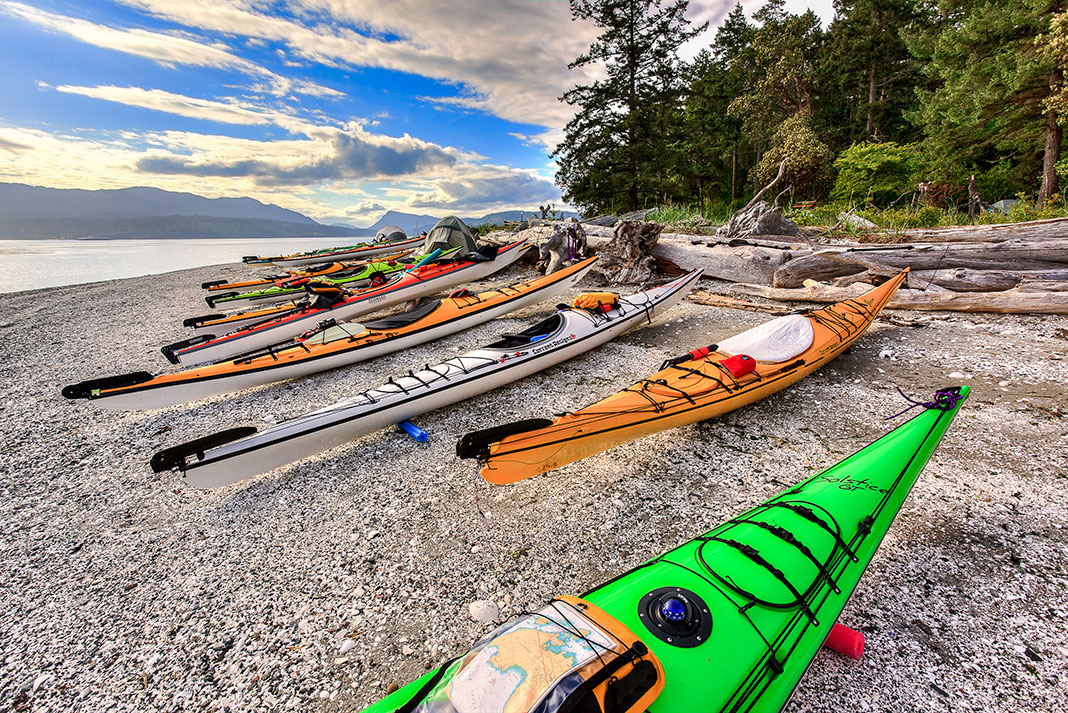
Manufacturers responded. They generated fleets of recreational kayaks, day tourers and paddleboards, great for quick jaunts but not ideal for camping. Sea kayaks became a tiny trickle of retailers’ inventory. Today, paddling is like going for a hike or a few hours at the gym, not a voyage where you pore over charts weeks ahead of time.
Well, so the story goes.
You’d never know it from the spit I’m standing on in Puget Sound, drybags in hand, trying to figure out where to camp. Tents dot the spit and most flat spots in the woods. I wander around, eventually finding an unclaimed spot. Unfortunately, I’m not the early bird; this is the only tent spot left. And it’s not even high season—it’s fall.
Kayak touring has been on the upswing
The demise of sea kayaking has been the subject of much angst for more than a decade now. Don’t believe the hype. The tents turning this gravelly beach into a small village aren’t an anomaly. Despite the reports of its demise, touring kayaking and sea kayaking were on a slow but steady rise from 2007 until 2018, according to the annual Outdoor Participation Report. It held steady in 2019 before Covid hit—and we all know what happened to the outdoors then.
Sea kayaking and kayak touring still have a fraction of the participants of more accessible sports like hiking, and about a quarter of recreational kayaking. According to the report, about 1.1 percent of Americans self-identified as sea kayakers. And, keep in mind, only four out of 10 Americans live near the sea or readily tourable water.
Most importantly for the future, participation rose faster among 18 to 24 year olds than the population as a whole. That means more young adults, in the process of defining themselves and their outdoor sports personalities, are into sea kayaking. It could be a long while before I find a tent spot.
After I grab the last almost-flat spot, I realize something else is different, too. Lined up on the beach are a few classic sea kayaks, a couple of canoes, and some rec boats that were probably overloaded getting here. This isn’t your old-school sea kayak tour.
Instead, the random fleet matches the random assortment of agendas. There’s a trio of guides on their day off, who just paddled out for one night to chill without clients. Two other pairs in canoes and rec boats are on one-nighters, organized at the last minute when they realized they had an evening free for a quick getaway. Another group reeled a friend with a powerboat into hauling their stuff and their dog on a three-day paddle through the Sound with all the luxuries of a posh rafting trip—which ends with them offering me fresh food. And then there’s one couple, decked out with the classic 17-foot boats and carbon fiber paddles, huddled under an ultralight tarp, who is on the end of a weeklong island-hop the authors of a 90s guidebook would be proud of. All but the last couple live nearby.
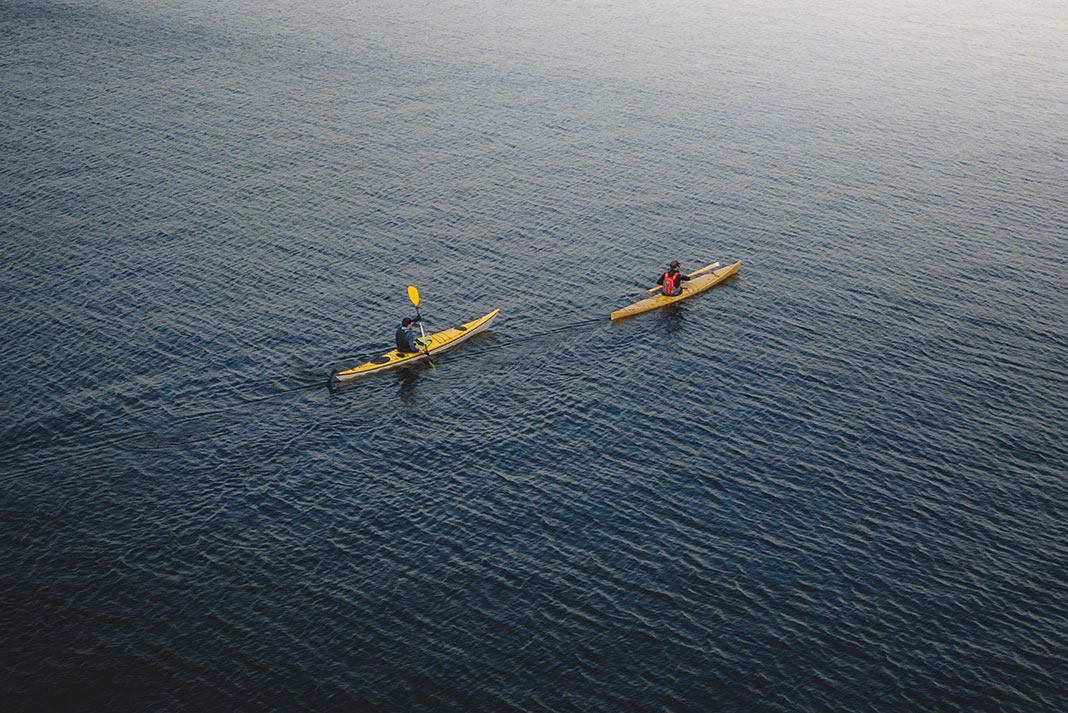
For many paddlers, touring works for the weekend
Sea kayak camping isn’t dead, but it’s different from its imaginary heyday. The weeklong expedition is a rarity, but the quick overnight on the back 40 is doing just fine. The new face of kayak touring may be neither day touring nor an expedition but the quick weekend camping jaunt.
If this is the trend, other changes may be afoot. Camps close to town easily accessed without madly clicking for online permits, shelling out for water taxis, or waiting for a narrow range of sea conditions will be in high demand. This will strain often obscure agencies managing these places: county parks departments or outfits like the Oregon Division of State Lands, which aren’t usually in the recreation business.
Trips will be about spontaneity, weather windows and schedules, not carefully planned vacations to iconic spots. Classic BCU-style kayak education will give way to local knowledge, hopefully without mishaps. And camping in home waters is more likely to lead to an enduring ethic of stewardship than the once-a-year journey to Alaska.
Over time, we may not call it kayak touring. We may just call it, advanced kayak picnicking. Kayak touring is far from dead. It’s just different.
Neil Schulman lives and paddles in Portland, Oregon.
The reports of my death are greatly exaggerated. | Feature photo: Ron Watts


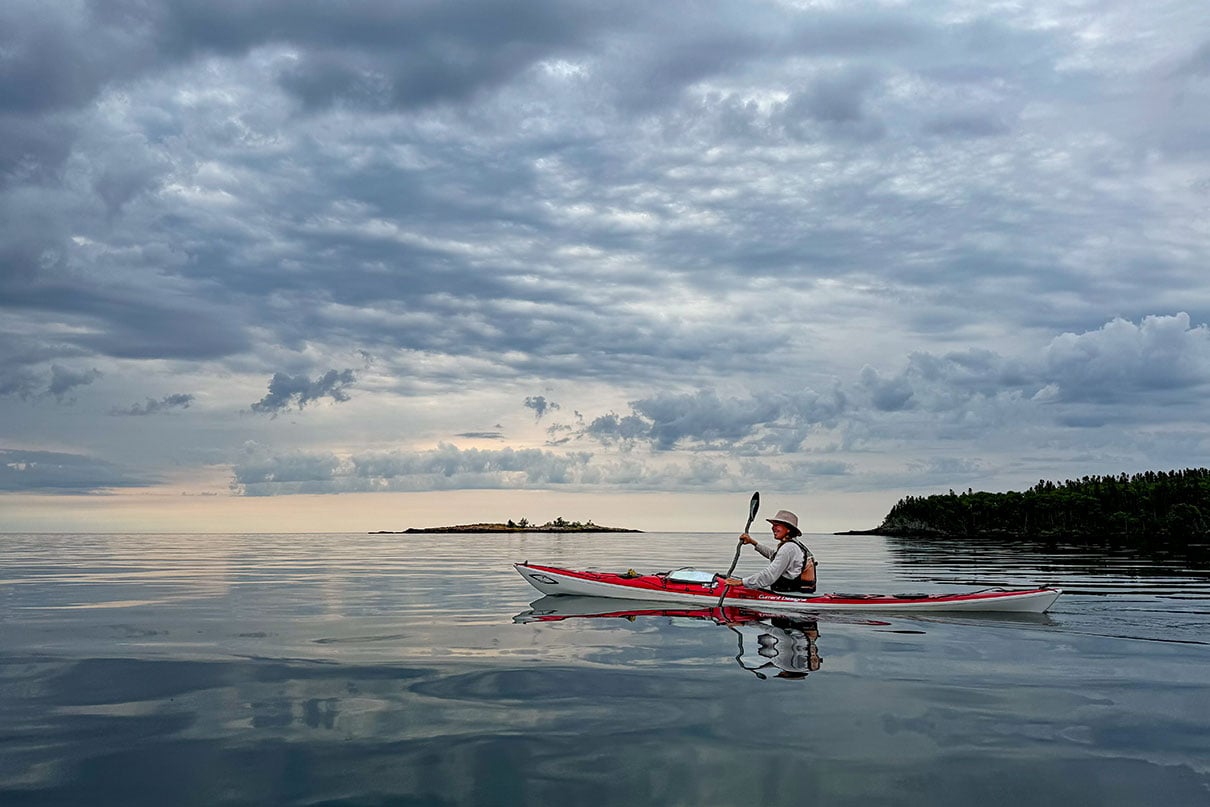
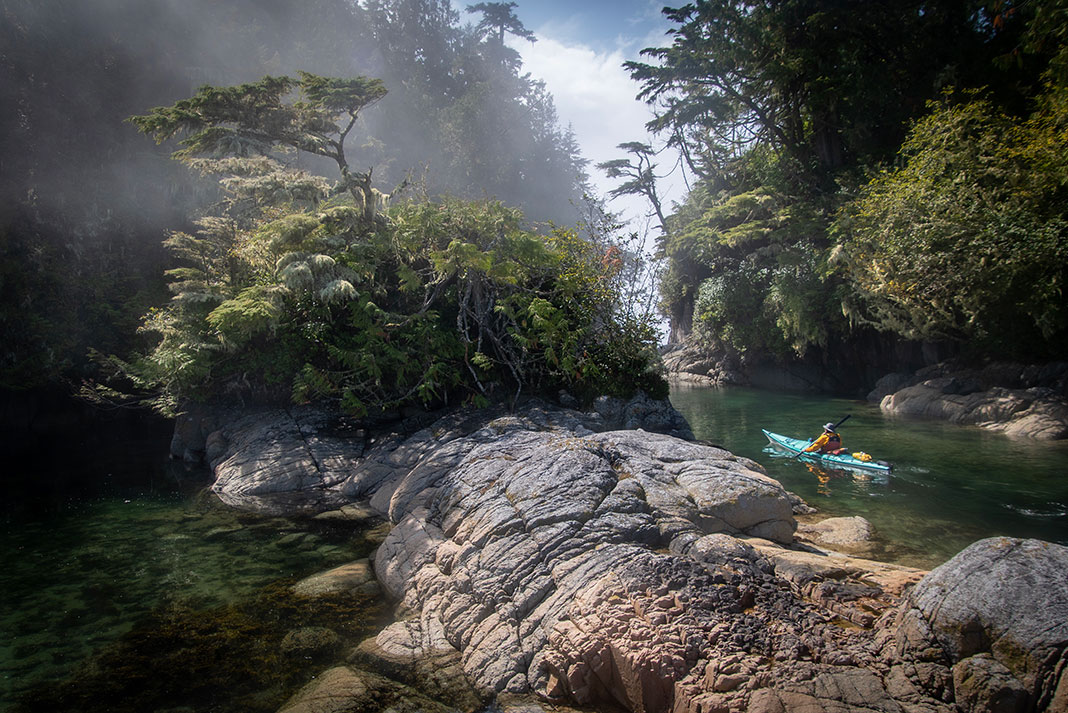
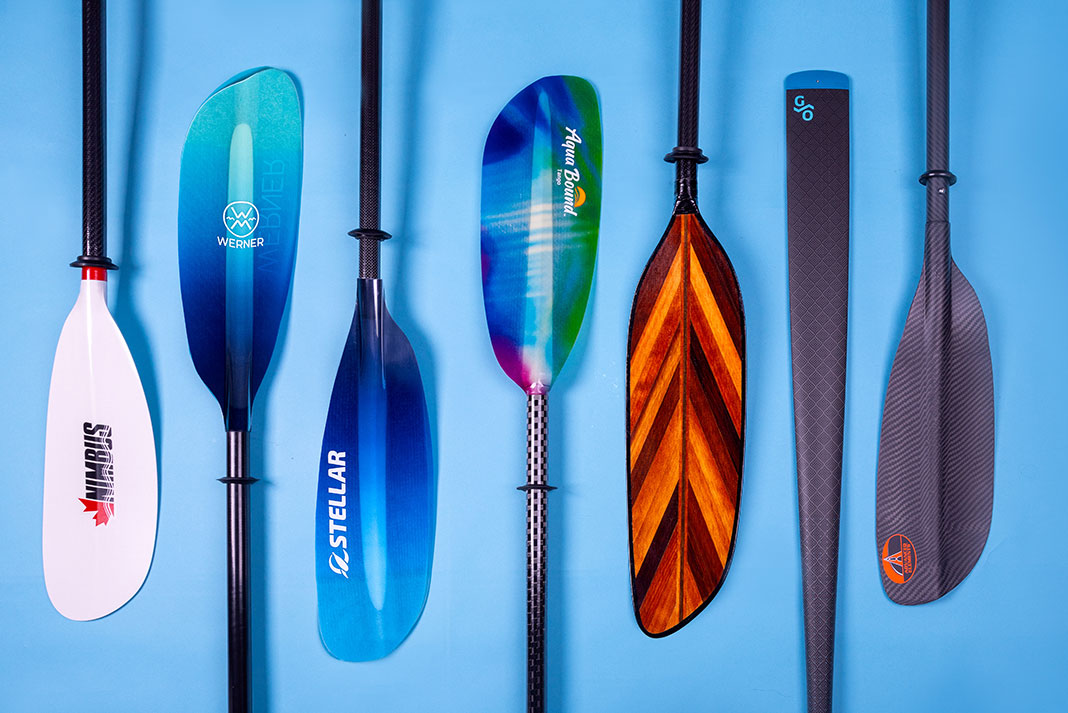
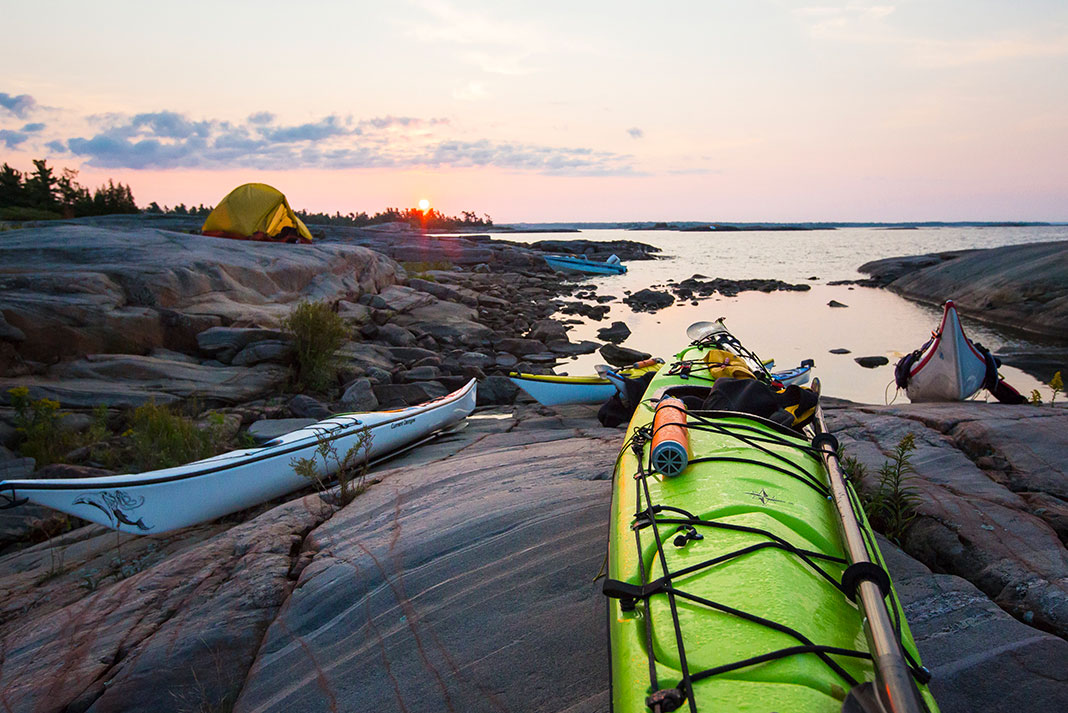
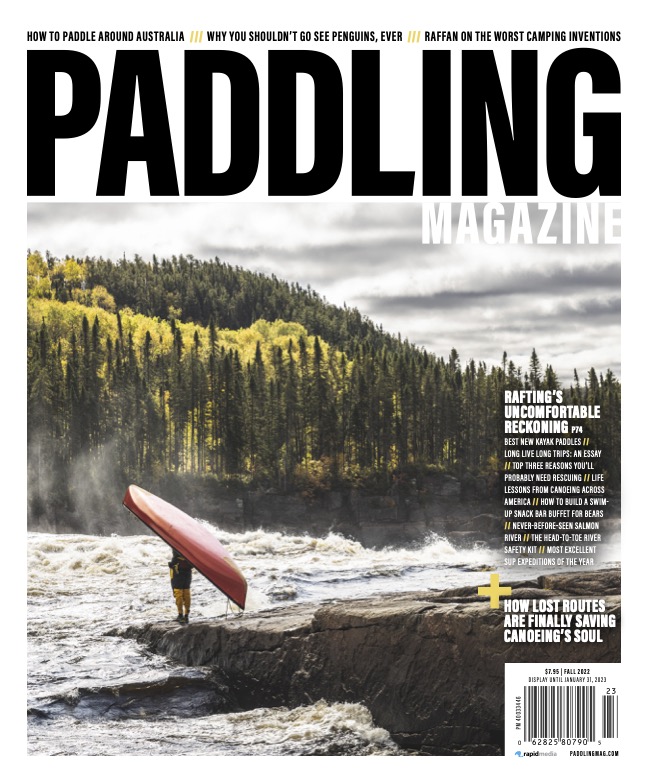 This article was first published in the Fall 2022 issue of Paddling Magazine.
This article was first published in the Fall 2022 issue of Paddling Magazine. 
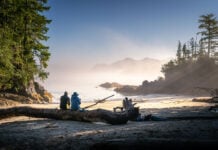

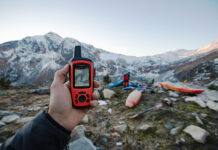
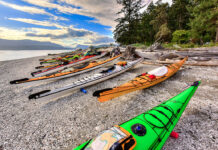

The first part of the article (how the story goes) is actually quite true. It’s an excellently written article, btw. It resonated with me as one who lived it; I’m 54, so back in the 90’s when I expanded my love of surfing and the ocean to include the awesome, tranquil sport of sea kayaking it was paddling all over the Southern California coast, doing paddles southward from Palos verdes peninsula to Dana Point in a full day trip. I’d create patterns with the oil rigs off Huntington, Seal, and Long Beach (unfortunately, and unlike paddlers like you with amazing scenery of inlets and such, it was just the wide open blue pacific for me but I loved it). I stumbled on a shop for my first boat that sold Necky yaks, and that was my brand through four boats I owned.
However, just as you list so many variables that contributed to the decline (as the story goes), I came say some of that is true for me. There’s one big thing to add though, which I’ve experienced to a degree, and that is the number of people—especially loan-strapped gen xer’s—who have moved away from the coast for financial (and even political) reasons. There has been such a massive, passionately-driven exodus out of expensive coastal cities, especially in CA.
Now my love of surfing, my first water love, made that move hard when we were among those in the exodus, but my love of surfing is what made me only consider states with a coast. So I ended up in Southeast Texas, near Galveston Island, where there’s tons and tons of salt water—both protected and open Gulf waters (although nothing like the pacific and windy quite often). But I went to a coast and I left with two yaks—thinking I’d be paddling a lot when I moved here a decade ago—especially since the surf on the Gulf coast is inconsistent. I figured I’d continue the pattern I started in CA when I discovered sea kayaking, which was to use kayaking to keep me on the water consistently all year and/or when surf was down. But I’m thinking about the millions of people who have not made that a priority and moved inland.
Well, as my story goes, I found that after five years I paddled once or twice. The hot, long summers here put a serious damper on enclosed cockpits, and during the winter, short as it is, it’s not the same kind of cold you get in Alaska or Washington. It’s driven by cold fronts and nasty winds that push down from the Midwest; they’re not pleasant, and they’re bitter cold. On top of it, they create offshore wind conditions that will send you on an unplanned trip to Cuba or Cancun if you’re caught unprepared (25 mph plus, sustained). So I didn’t use them and sold the first of the two I brought. I was noticing the shift in both myself (my personal experience) and also the decline in popularity objectively/universally in a number of online venues where sea kayaking was once so much more popular. In fact, in many of those venues is where I started seeing so much discussion about SUP (touring, racing, surfing) and it grabbed my interest because I still desperately needed an alternative to the long flat spells we get here. I bought a 14’ downwinder open ocean sup board (SIC) that paddles in all conditions, including expedition-type paddles, excellently and a 14’ flatwater racing board (Starboard) after unloading the first fiberglass Necky. Well, finally sold the other boat, Necky Looksha IV, last year to order a new longboard (since short board surfing on the Gulf is not nearly as fun as long boarding here). But all this to say that over the last decade especially, and even before our move for several years, I found myself looking back at pictures and looking at those kayaks in the garage and thinking thoughts about what I definitely perceived as a decline. In the last couple of years I was doing paddles in my So Cal region, I noticed the absence of many regulars I’d often see out there. It was happening and it was real.
So, for what it’s worth, I think the decline is a reality (maybe not a death yet, but on life support for sure). I think in majestic places for kayaking like Puget Sound or AK, it’ll never go away, but for so many other places it has—sadly.